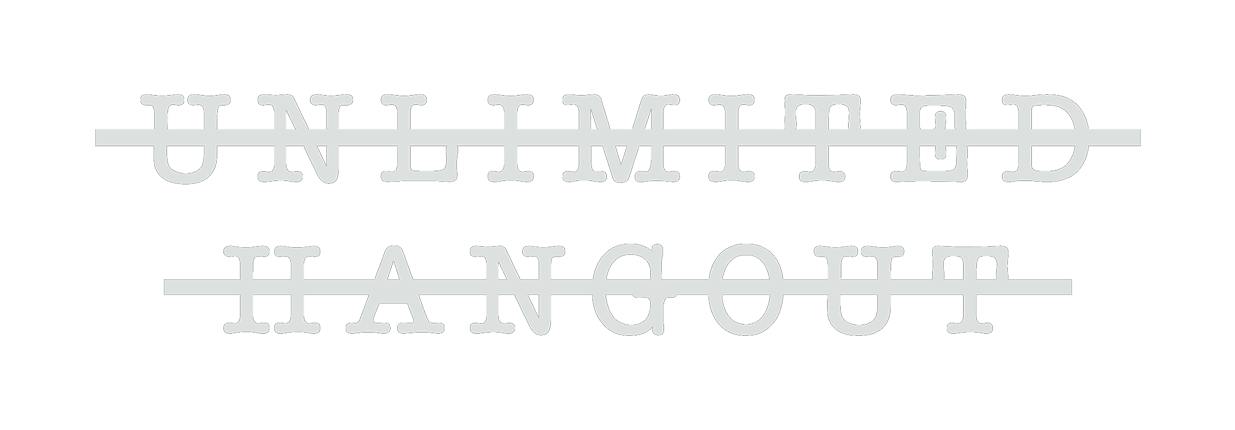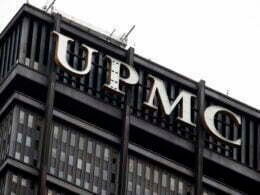Whether for his controversial comments on private property seizure by governments and corporations or his coming testimony in the JPMorgan-Jeffrey Epstein case, Jamie Dimon – the CEO of JPMorgan – has been in the news a lot lately. While Dimon’s comments often receive media attention by virtue of the power he wields on Wall Street and the U.S. banking industry at large, most know very little about Dimon’s time before JPMorgan and how he came to lead one of the largest, most powerful banks on Wall Street and in the world.
As detailed in Part 1 of this series, Dimon’s rise to the top was made possible by his connections, and those of his benefactors, to networks where intelligence, organized crime and corporate power intermingle. As noted there, many of the same elite circles that gave rise to Jeffrey Epstein, namely those around Leslie Wexner, also played a key role in Dimon’s selection to be the CEO of Bank One – the position which directly led to his becoming the head of JPMorgan.
Yet, in addition to close associates of Wexner, Dimon’s coronation as one of the most powerful bankers in the country was also made possible thanks to another powerful clan that also shares close connections to Wexner – the Crown family of Chicago. Perhaps even more than Wexner, the Crowns are a testament to how the worlds of organized crime and corporate power have mixed over the years to produce elites who are truly untouchable. With a long-standing dominant role in the American military-industrial complex as well as other facets of the corporate world, the Crowns have a history of doing what’s necessary – whether legal or illegal – to get what they want to advance their political agendas and grow their own power. Even presidents and the Pentagon have been unable to successfully challenge them. As this article will show, the Crowns – perhaps more than any other group – are a critical part of the story of how Jame Dimon became the king of Wall Street.
Crown Prince of the “Super Mob”
Henry Krinsky was born in 1896 in the city of Chicago. His father, a Jewish immigrant from Lithuania, worked as a sweatshop foreman and changed the family name to Crown when Henry was a child. After dropping out of school in the 8th grade, Crown started a steel business with his older brother, Sol Crown, in 1915, creating S.R. Crown & Company. A few years later, in 1919, another brother, Irving Crown, joined the company, which became Material Service Corporation (MSC), a sand, gravel, lime and coal business that was prominent in Chicago’s construction industry.
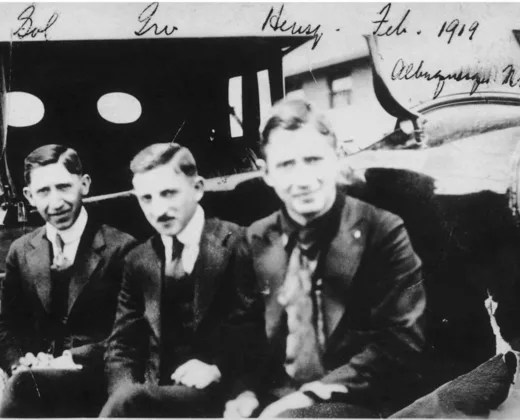
Henry Crown developed an early relationship with Jake Arvey, a notorious political fixer for the Democrats in Chicago who, like Crown, was the son of poor Jewish immigrants. Arvey had deep ties to the Chicago mob, including the circles around notorious gangster Al Capone, and even worked for companies that authorities identified as “controlled by the Capone mob in Chicago,” like Continental Press. Arvey worked with Al Capone and his associates to put mob-aligned politicians into positions of power in Chicago, including the mayor’s office.
Arvey was a key figure in the network explored in-depth by journalist Gus Russo in the book SuperMob. This “SuperMob” network was composed mainly of Jewish and Italian mobsters and businessmen who rose to power thanks to the corruption within the city of Chicago before expanding to other areas of the country, particularly the West Coast. Another key figure, and Arvey associate, was the lawyer Sidney Korshak, once referred to as the “logical successor to Meyer Lansky” by New West magazine. Korshak, another early friend of Arvey’s, had also forged an early working relationship with Capone and had advised the gangster prior to his law career. Once a lawyer, Korshak worked as a fixer for the intermingled interests of certain organized crime-linked and other “legitimate” corporate interests. One of his clients was Crown’s MSC, with Korshak serving as the firm’s labor lawyer. Thanks to the his connections to both Korshak and Arvey, Crown was able to obtain “lucrative city contracts in Chicago” that soon made him and his brothers millionaires.
During World War II, Crown took leave of MSC to join the Army Corp of Engineers, which benefited from Crown’s long-time connection to Arvey. As Gus Russo notes:
[Arvey] managed to become, with no small thanks to friends in the Roosevelt administration, the overseer of countless international post exchange (PX) facilities on military bases. Soon, the military was supplying these PXs with goods purchased from buddy Col. Crown’s Material Service Corporation.
During this period, including just months before Crown’s discharge in 1945, MSC was accused of corruption in what would become a pattern for the firm. In particular, MSC was sued for over $1 million for price-gouging a number of Chicago city and Illinois state agencies. Another case from the 1940s saw MSC sued by a woman who had invested her life savings into the company for 170 shares in the firm, only to receive nothing from the Crowns.
During the early post-war period, Crown became involved with David Baird, a director of Hilton Hotels, and his Baird Foundation. The Baird Foundation had close connections with a variety of organized crime associates including: Meyer Lansky frontman, Louis Chesler; real estate magnates William Zeckendorf and Lawrence Wien; and Charles and Herbert Allen of Allen & Co.

The Baird Foundation also had connections to Permindex, an intelligence-linked outfit with both CIA and Mossad connections that is alleged to have played a role in the death of John F. Kennedy. According to correspondence from Permindex lawyer Louis Mortimer Bloomfield, Permindex had “cultivated” interest for their efforts among American businessman, Baird in particular. The Baird Foundation was later revealed to have been an asset of the CIA’s International Organizations Division and acted as a “pass through” conduit for sending Agency funds to CIA fronts in the Middle East and Africa. Furthermore, Baird’s main banker, Serge Semenenko of First National Bank of Boston, had his own ties to Crown, with Crown once contacting Semenenko to arrange for financing of what would become the Acapulco Hilton.
By the end of the 1950s, MSC was well on its way to becoming one of the top government contractors in the country. Its fortunes in that regard only grew following the company’s merger with weapons manufacturer General Dynamics in 1959. Crown gained 20% equity in the new company, with MSC becoming a subdivision of General Dynamics, and Crown’s right-hand man, Patrick Hoy, became Vice President of the company. Hoy had previously been president of Chicago’s Hotel Sherman, which had close connections to the city’s organized crime community.
Crown served as a director of General Dynamics until he was forced out in 1966. That same year, Hoy also left General Dynamics to join Penn-Dixie Cement Company, the CEO of which was Jerome Castle – “an admitted ‘old friend’ of New York crime boss Frank Costello.” Refusing to accept defeat, Crown spent years buying back large amounts of General Dynamics stock, which eventually allowed him to stage a takeover and wrestle back the company so it would again be firmly under his control.
Before Crown was forced off the board in 1966, he and General Dynamics shared a series of odd connections to figures intimately connected to the assassination of John F. Kennedy in 1963. Toward the tail-end of the Eisenhower administration, a plan was hatched to develop a fighter jet called “Tactical Fighter Experimental” or TFX. The decision to award the contract to build TFX to General Dynamics would quickly become a source of great controversy.
According to L. Fletcher Prouty, the controversy was largely due to a plan hatched by Kennedy’s Labor Secretary Arthur Goldberg, an OSS veteran, and Defense Secretary Robert McNamara that resulted in McNamara awarding the contract to the firm that would benefit the Democratic party the most, which turned out to be General Dynamics. However, the political calculus of McNamara and Goldberg clashed with the fact that top officials and experts at the Pentagon had found the General Dynamics proposal to be “unacceptable” and had recommended that Boeing instead be chosen, arguing that Boeing had more experience building such aircraft and that the costs would be lower. The Pentagon would eventually be proven right, as General Dynamics was ultimately unable to produce a functional fighter jet and the debacle wasted billions of U.S. taxpayer dollars.
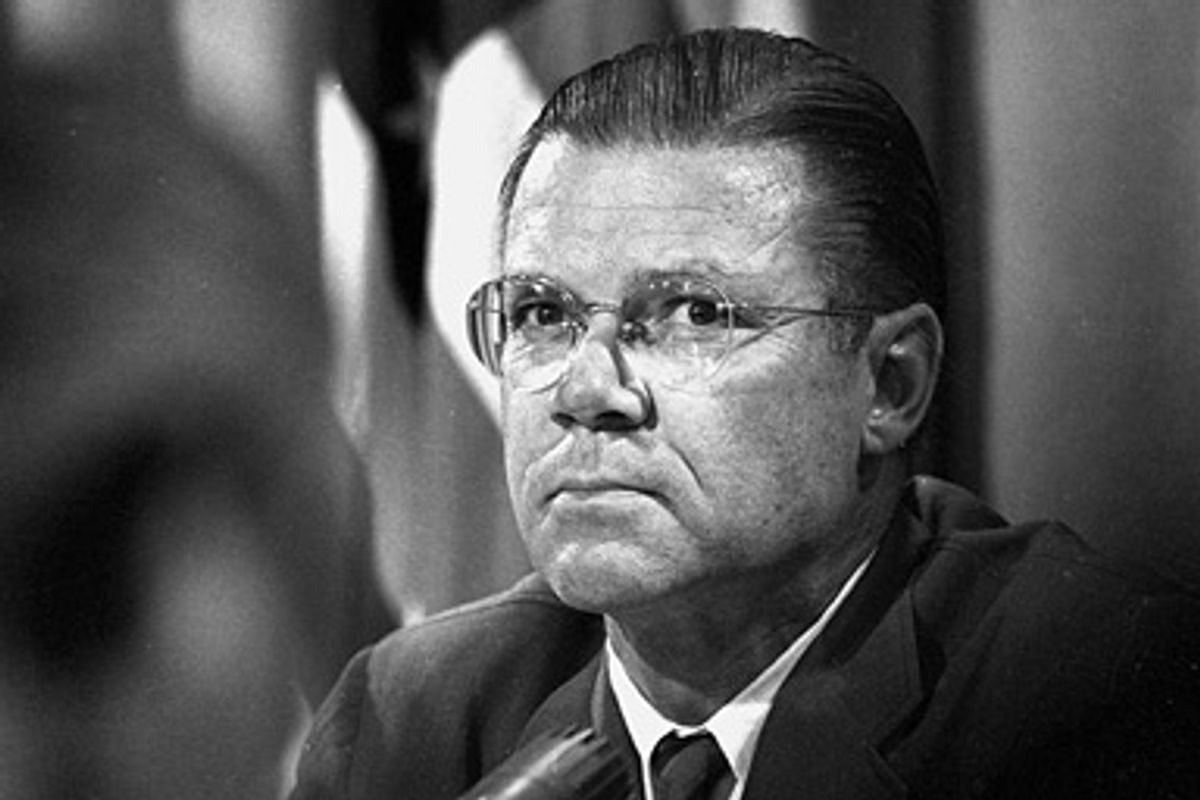
Even though “the entire military chain of command [had] recommended the Boeing Corporation” receive the contract, McNamara overruled them and gave the contract to a joint effort of General Dynamics and the Grumman Aircraft company after a “breakfast meeting” with his deputy, Roswell Gilpatric. McNamara’s rejection of an unanimous recommendation of top military officers was later described by American military scholars as “absolutely unprecedented.” Accusations of deeper corruption emerged after it was further revealed that Gilpatric had worked as a lawyer for General Dynamics from 1958 to 1961 and had a close relationship with the Crowns and other top officials at the defense firm. Notably, Gilpatric had managed the TFX negotiations for the Department of Defense.
In addition, another person involved in the TFX contract decision, Navy Secretary Fred Korth, also had a very cozy association with General Dynamics and Henry Crown through his connection to Continental National Bank. Korth had been president of the bank and had done a considerable amount of business with General Dynamics while in that position. In addition, Korth, while involved in the TFX contract decision, had had “at least sixteen contacts with officials of the General Dynamics Corporation.” After an investigation, then-Attorney General Robert F. Kennedy suggested that Korth resign, which he did on October 14, 1963.
The investigation into the TFX situation was cut short due to the Kennedy assassination. Notably, these hearings, if they had been allowed to continue normally, were due to implicate Vice President Lyndon B. Johnson and associates of his like Bobby Baker. As Peter Dale Scott wrote in his book, Deep Politics and the Death of JFK:
According to President Kennedy’s secretary, Evelyn Lincoln, Bobby Kennedy was also investigating Bobby Baker for tax evasion and fraud. This had reached the point where the President himself discussed the Baker investigation with his secretary, and allegedly told her that his running mate in 1964 would not be Lyndon Johnson. The date of this discussion was November 19, 1963, the day before the President left for Texas.
A Senate Rules Committee investigation into the Bobby Baker scandal was indeed moving rapidly to implicate Lyndon Johnson, and on a matter concerning a concurrent scandal and investigation. This was the award of a $7-billion contract for a fighter plane, the TFX, to a General Dynamics plant in Fort Worth. Navy Secretary Fred Korth, a former bank president and a Johnson man, had been forced to resign in October 1963, after reporters discovered that his bank, the Continental National Bank of Fort Worth, was the principal money source for the General Dynamics plant [involved in the TFX contract].
On November 22, 1963, the day of the assassination, a closed session of the Senate Rules Committee heard sworn testimony from a Baker business associate, Don Reynolds. Reynolds was telling the committee of a big lobbyists’ sex party in New York, and also of a suitcase he had seen, full of money which Baker described as a $100,000 payoff to Johnson for his role in securing the Fort Worth TFX contract. His testimony was broken off by the news that the President had been shot….
On his return from Dallas the same day, the new President made time to telephone Abe Fortas, who had represented Bobby Baker at the closed hearing, to learn what Reynolds had said. Thanks to what one senator called “string-pulling by Johnson and Abe Fortas,” only a highly bowdlerized version of the Reynolds testimony reached the public and the press, who declined to pursue the matter.
Johnson was even more effective in closing off the parallel Senate investigation of the TFX contract, by Robert Kennedy’s former Senate boss Senator McClellan. The McClellan subcommittee had closed its TFX meeting on November 20, 1963, with the chairman’s undertaking “to resume hearings next week”; Business Week predicted that Fred Korth would be the next witness. But the hearings promised for “next week” were not resumed until 1969, after Johnson had left office; and Korth never had to testify.

It is also worth noting that reports of the period argued that Johnson had been the key force in the awarding of the TFX contract to Crown’s General Dynamics, with one report stating that “Pentagon insiders were said to refer to the TFX as the LBJ.” In addition, the TFX contract came at a critical time for General Dynamics, which was likely to shutter its military aircraft business if it had failed to secure the TFX contract, suggesting that the politically-connected company was willing to go above and beyond to ensure that they won the deal.
Adding to the oddity of the situation is that fact that Lee Harvey Oswald and his wife had, in October 1962, “established social contact with Max Clark, the chief of industrial security for the General Dynamics plant in Fort Worth which secured the controversial TFX contract in the fall of 1963.” At the time, Oswald was officially working for the photographic firm Jaggars-Chiles-Stovall, which was doing classified work for the Army Security Agency. However, Peter Dale Scott concluded that, during this period, Oswald’s “true employer” was more likely “a private investigative agency doing industrial security work,” which “would explain the FBI’s zeal to cover up [Oswald’s] paycheck anomalies, and the reluctance of the government, to this day, to release Oswald’s income-tax records.” In addition, Oswald’s alleged handler, George de Mohrenschildt, had been closely tied to David Baird’s main banker, Serge Semenenko, who – as previously mentioned – also shared connections to Henry Crown.
Also worth noting is the fact that Henry Crown had connections to the Warren Commission, the controversial and conflict-of-interest-ridden body that investigated the Kennedy assassination. As noted by Peter Dale Scott, one of the authors of the Warren Commission Report and a top counsel to the Commission was Albert Jenner. Jenner was simultaneously representing Henry Crown, who is described by Scott as a “Chicago businessman close to Democratic political kingmaker Jake Avery, in whose political machine [Jack] Ruby and his brother had reportedly worked.” Scott also states that “later, Jenner was attorney for one of the organized-crime figures, Irwin Weiner, whom Ruby telephoned shortly before the Kennedy assassination.”
Perhaps the most unusual of Crown’s ties to the intrigues of this period was revealed by journalist Seymour Hersh. Per Hersh, officials at General Dynamics (and presumably Crown) may have used knowledge of Kennedy’s alleged affair with artist Judith Exner to help secure the TFX contract for General Dynamics. He writes:
The Kennedy-Exner relationship apparently became known in the late summer of 1962 to the General Dynamics Corporation, one of two defense firms intensely competing for the right to manufacture a new generation of air force and navy combat plane known as the TFX (Tactical Fighter Experimental). General Dynamics may have used that knowledge to win the contract and force the government to spend billions of dollars to build a navy version of TFX that many in the military knew would not work.
Exner was under heavy FBI surveillance due to her relationship with the president, which resulted in FBI agents witnessing a break-in at her apartment in August of 1962. The break-in, per Hersh, lasted long enough “to sort through records or install a wiretap” at Exner’s residence. The agents’ superiors declined to report the entry to the police, and it was later revealed that those responsible for the break-in were the sons of former FBI special agent I.B. Hale of Fort Worth, TX. At the time of the break-in, Hersh revealed that Hale had been in charge of security for General Dynamics.
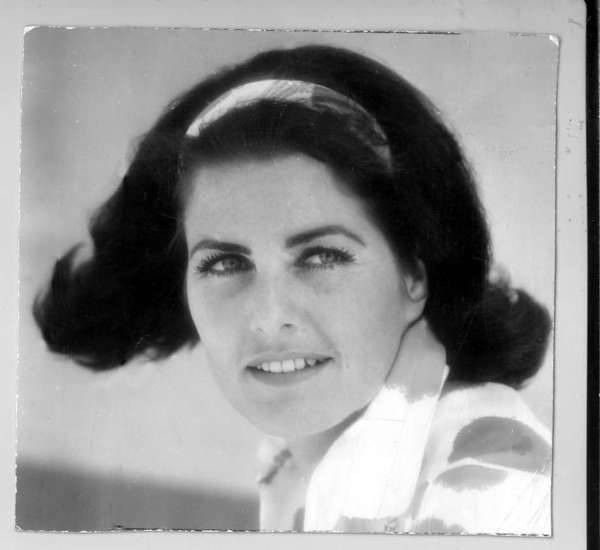
There is certainly a possibility that sexual blackmail was used to secure the TFX contract for General Dynamics. An academic analysis of the TFX issue from the 1970s noted that “the exact nature and extent of the Presidential [i.e. JFK] and Vice-Presidential [i.e. LBJ] influence in the TFX decision-making process has never been fully disclosed…. As one commentator noted, ‘only two men ever really know the answer to that, and one of them is dead.’”
Further questions arise when one considers the means by which Crown and General Dynamics may have been tipped off about Kennedy’s affair with Exner. One possibility lies in Exner’s self-professed mob connections, as she claimed to not only have been friendly with mobsters during this period, but to have also been the lover of Chicago gangster and CIA collaborator Sam Giancana. Giancana, of course, was one of the top figures in the Chicago underworld that had allied itself directly with Crown.
Exner also stated that she was first introduced to Kennedy by another Giancana associate, singer Frank Sinatra, at the Fontainebleau Hotel in Miami. The hotel was a well-known hangout for Sinatra, Giancana and Chicago mobsters. It also had numerous financial connections to organized crime and was allegedly owned by associates of Meyer Lansky. Notably, in 1962, the same year that he learned of the Kennedy-Exner relationship, Henry Crown had loaned the Fontainebleau Hotel the considerable sum of $13 million.

Another possibility of how Crown learned of the relationship relates to FBI director J. Edgar Hoover. Per Exner, Kennedy and Exner first became lovers at a room in the Plaza Hotel in New York, which had reportedly been the site of organized crime-linked blackmail “sex parties” during this same period where guests were recorded without their knowledge. These parties reportedly involved political figures like Roy Cohn and J. Edgar Hoover, both notorious enemies of John and Bobby Kennedy. This raises the possibility that the room in which Exner and Kennedy began their affair could have also been bugged by the same network.
Furthermore, Exner was, as previously mentioned, under “intense FBI surveillance” while she was involved with Kennedy and Hersh notes that Exner’s apartment may have been bugged by the FBI before the break-in by I.B. Hale’s sons. That break-in to Exner’s apartment was witnessed by the FBI, but was not reported to the police. This was in violation of the routine procedure they should have followed in that situation. If the FBI had their own wiretap at Exner’s home at the time of the break-in, they would have likely wanted to avoid a police search of Exner’s residence for their own reasons.
In addition, Crown was also a close business associate of a close friend of Hoover’s that had his own ties to the criminal underworld – Delbert “Del” Webb. Webb, who partnered with Crown to buy part of an Arizona ranch and who also shared partial ownership with Crown of the New York Yankees, was one of the main forces in Las Vegas gambling. This saw him partner directly with Lansky and other mobsters. In other words, Crown was likely either tipped off about the Kennedy-Exner relationship as a potential blackmail opportunity either through his ties to organized crime or through his indirect ties to Hoover through mutual associates like Webb. The possibility of a Hoover connection is not as outlandish as it may seem, given that Kennedy had previously been targeted in a sexual blackmail operation involving the network responsible for the UK’s Profumo Affair, which itself had strange connections to both Hoover and his associate Roy Cohn.
Lester Crown: Henry’s Heir
For many years, Henry Crown’s heir apparent was his eldest son, Robert Crown. However, after Robert Crown died unexpectedly of a heart attack in 1969, that title fell to Crown’s second son, Lester. In 1950, Lester had married Renee Schine, the daughter of Julius Mayer Schine. Schine was closely associated with J. Edgar Hoover and, like Henry Crown, also had organized crime connections. For instance, he admitted to the Congressional Kefauver Committee that he “had a deal with the mob for gambling operations at his hotels.” One of these deals involved Mickey Cohen, of the Chicago outfit that was allied with Crown, and was based at the Ambassador Hotel, which Schine owned. Notably, the Ambassador hotel was the site of the assassination of Robert F. Kennedy in 1968. It is also worth noting that Renee Schine’s brother, G. David Schine, was a close friend (and some allege a possible lover) of Roy Cohn. Both he and Cohn played a central role in the McCarthy hearings, as well as the downfall of Senator Joseph McCarthy by provoking the Army-McCarthy hearings after Cohn attempted to blackmail the military to prevent Schine, who had been drafted the year prior, from being stationed overseas.

The Schines would later accuse Lester Crown of “raping” the Schine family business and attempting to force the other members of the family into financial servitude by offering them loans instead of a payout after Crown liquidated Schine Enterprises. Crown countered that he had merely been too “generous” with his in-laws. It wasn’t just the Schines either, other members of the Crown family battled with Lester as well. His cousin Barry Crown once said of his dispute with Lester: “Lester didn’t steal. He just wasn’t letting anybody have what was theirs. Lester takes everybody’s money and controls it.”
Aside from his issues with family, Lester Crown, like his father, was involved in a series of scandals relatively early on in his career, including a political bribery scandal in the early 1970s when Lester was president of MSC, which by then was a division of General Dynamics. Lester had been the impetus behind the bribery plot and, when MSC was subpoenaed by a Federal Grand Jury investigating corruption in the industry, he turned to Albert Jenner to get him “out of trouble.” Jenner, the Warren Commission counsel and report co-author, was on the board of General Dynamics at the time and was able to help secure a deal whereby Lester Crown received immunity from prosecution in exchange for “his cooperation with the grand jury.”
A few years after the bribery scandal, in 1974, Lester Crown was elected to the board of directors of General Dynamics. Two months later, the Department of Defense granted Lester’s application for a top-secret clearance. However, the Department of Defense had not been made aware of Lester’s role in the bribery case at that time. In 1976, the Securities and Exchange Commission (SEC) investigated and sued Crown and General Dynamics for failing “to disclose the scandal in the 1974 proxy nominating him for the board of directors – and for the manner in which the matter had been treated in the company’s 1975 and 1976 proxies.” The SEC eventually cut a deal, with General Dynamics merely agreeing “to be more forthcoming in the future.”
However, Crown’s troubles were hardly over. In 1977, a man named P. Takis Veliotis was put in charge of Electric Boat, a major General Dynamics subsidiary, with Lester Crown’s approval. Veliotis, a few years later, fled to Greece to avoid charges of corruption related to his activities at General Dynamics. The investigation into Veliotis widened and General Dynamics, then the largest weapons manufacturer in the country, was charged “with misconduct ranging from billing fraud to securities-law violations to bribery.” Crown later claimed to have been duped by Veliotis, but this is hard to believe given that, around a decade before he was hired by Crown and General Dynamics, Veliotis had been at the center of the Bonaventure remodeling incident, described by the Chicago Tribune as “Canada’s largest defense scandal since World War II.”
Veliotis later revealed that he had secretly recorded his meetings with General Dynamics executives and charged that the company had intentionally overcharged the Navy $640 million dollars. Like Crown, the way in which Veliotis had obtained top secret security clearance while at General Dynamics was controversial. According to reports, “Veliotis’ most important security clearance was processed and granted in less than two months at the urging of Adm. Hyman G. Rickover, a few weeks after General Dynamics gave the admiral’s wife valuable gifts of jewelry.”

The same year that Veliotis fled the United States, in 1982, the Pentagon first learned that Crown and General Dynamics had failed to report his past role in the bribery scheme when his security clearance had been requested. Veliotis’ subsequent allegations against Crown and General Dynamics further soured an already unhappy Pentagon.
Then, in October 1984, the Pentagon began to rate a series of General Dynamics facilities as “unsatisfactory.” The first of these, run by General Dynamics’ subsidiary Convair, was found to have “lost, or [was] in imminent danger of losing its ability to adequately safeguard classified information.” Later that year, in December, the Department of Defense began investigating a General Dynamics facility in Pomona, California regarding “the unauthorized disclosure of sensitive, internal Army classified information,” resulting in the suspension of security clearances for several General Dynamics employees.
Eventually, a wider investigation into General Dynamics was launched, which identified 38 of a total of 49 facilities as having either minor or major deficiencies that “could logically lead to the loss or compromise of classified information.” Electric Boat, the division that Veliotis had overseen, was of particular concern to the military, especially after Veliotis himself – after fleeing the U.S. – had tipped off the Navy that Electric Boat was mishandling classified information, specifically images of the interiors of Trident submarines. It eventually became a subject of focus at Congressional hearings, as did the anomalies regarding Lester Crown’s top security clearance.
Shortly thereafter, in 1985, four current and former General Dynamics executives were indicted for overcharging the federal government. One of those indicted was James Beggs, then head of NASA. Shortly thereafter, General Dynamics was caught engaging in timecard fraud and, after, the mishandling of classified documents, which led to its Convair division losing its security clearance for a month.
Around this same time, the Pentagon made major efforts to revoke Lester Crown’s personal security clearance. At the hearing, Congressmen and Pentagon officials labeled Crown “an embezzler,” “an admitted felon,” and “a crook.” Coming to Crown’s defense, however, was none other than Robert McNamara – the man who had so controversially awarded General Dynamics the TFX contract. McNamara stated that he had “every confidence in his [Lester Crown’s] integrity,” while former Secretary of State Henry Kissinger praised Crown for his “extraordinary probity.” Kissinger was also, notably, a long-time personal friend of Crown’s and, as we will see, had aided foreign espionage efforts to install bugged software onto General Dynamics’ Trident submarines a few years before he vouched for Crown. A former underling of both McNamara’s and Kissinger’s, Alexander Haig, who had served as Secretary of State under Reagan and Richard Nixon’s chief of staff, also came to Crown’s defense. Crown’s clearance was ultimately upheld, with the Pentagon subsequently filing an appeal and continuing to push for the removal of Crown’s security clearance three weeks later.

According to Maj. Charles Thebaud Jr., who represented the Pentagon in the case against Crown, the Pentagon appealed because it continued “to believe that Mr. Crown’s clearance is not clearly consistent with the national interest.” He told the New York Timesthat the hearing examiner had “committed several material errors of law and that several of his factual conclusions were ‘without any evidentiary basis.’” Other Pentagon officials interviewed by the Times believed that the examiner had also been pressured “by those vouching for Crown,” such as McNamara, Haig and Kissinger. Despite the Pentagon’s efforts, Crown’s top security clearance was ultimately upheld in 1987.
After the damage to the public reputation of both Crown and General Dynamics, Lester Crown sought a new CEO to run General Dynamics with a sterling reputation for “ethical” conduct. Crown settled on a top executive at defense contractor TRW who had been dubbed “Mr. Clean” by the New York Times – Stanley C. Pace. While Pace was certainly “cleaner” than previous General Dynamics’ presidents, it is worth noting that Pace – while at TRW – would most certainly have known and worked closely with a most interesting figure – Sir Douglas Leese.
By 1965, Pace was Executive Vice President and a director of TRW, which – that very same year – acquired an automobile parts manufacturer called Cam Gears. At that time, the managing director of Cam Gears had been, since 1957, Douglas Leese. In 1971, Stanley Pace became head of TRW Automotive, which was the part of the company that had directly absorbed Cam Gears and where Leese still worked at the time.
TRW was likely Leese’s first introduction to the world of weapons dealing and he would later become a mentor to a young Jeffrey Epstein, where the two worked together on controversial arms deals in the 1980s, allegedly around the same time that Pace was put in charge of the Crown-controlled General Dynamics. Leese would later introduce Epstein to Steven Hoffenberg, who ran Towers Financial, where Leese was a principal. Epstein and Hoffenberg would subsequently utilize Towers to run a massive Ponzi scheme that went bust in the early 1990s.
Trident Submarines and Israeli Espionage
The Trident submarines produced by General Dynamics’ subsidiary Electric Boat were, notably, the target of an extensive Israeli espionage operation during the 1980s. That operation took place around the same time that Paul Veliotis had revealed that Electric Boat was mishandling classified information relating to those very submarines.
The Israeli operation targeting the Trident submarines was part of what is remembered today as the Inslaw Affair or the PROMIS scandal. PROMIS appeared in Part 1 of this series as Control Data Corp., the parent company of Commercial Credit Corporation – the vehicle used by Jamie Dimon and Sandy Weill to create what is now Citigroup, had its own connection to CIA-linked efforts to use PROMIS to track financial flows and launder money at institutions like the World Bank.
Probably the best known aspect of the PROMIS scandal was the plan hatched by Earl Brian, an associate of Ronald Reagan and his Attorney General Edwin Meese, and Israeli spymaster Rafi Eitan that led to the theft of PROMIS, a software program hailed as revolutionary that was created and owned by Inslaw Inc. PROMIS, which stands for Prosecutors Management Information System, was of particular interest to Eitan, who was then the head of the now defunct Israeli intelligence agency Lekem (sometimes written as Lakam), which focused on espionage relating to scientific and technological information and discoveries, particularly in the nuclear realm. Eitan, in collusion with Brian and officials at the Meese-run Department of Justice, managed to obtain a copy of PROMIS through deceptive means and had this program bugged with a backdoor. This gave Israeli intelligence real-time access to any computer or network on which this bugged copy of PROMIS was installed.
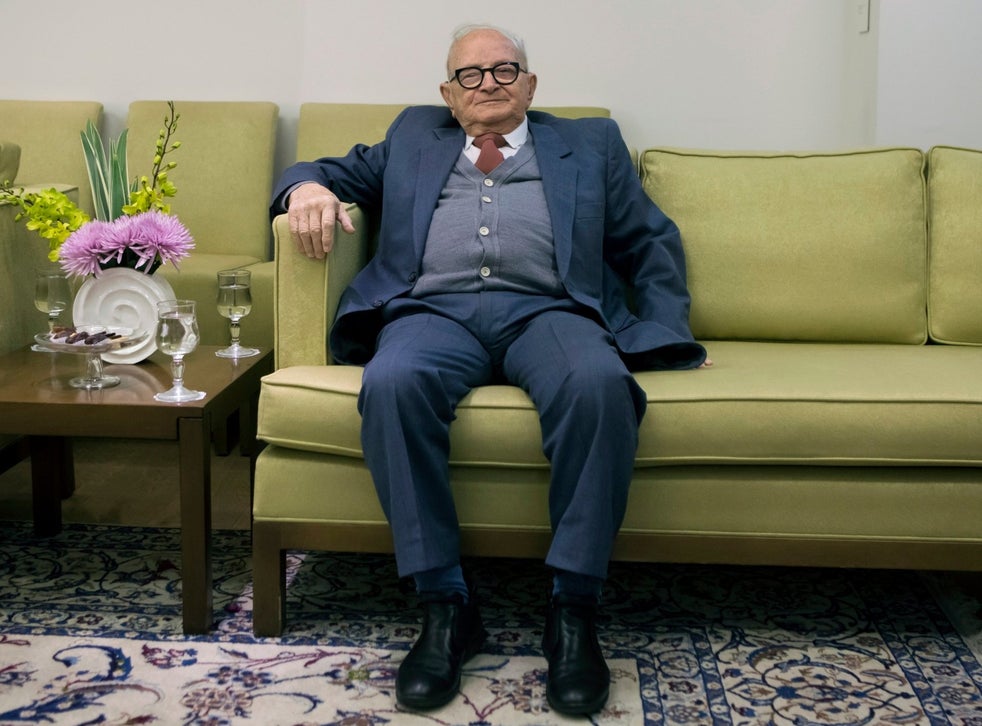
Eitan had originally counted on Earl Brian to market the bugged version of PROMIS around the world, focusing mainly on foreign intelligence and security agencies. Though Brian succeeded in selling the software to the intelligence services of Jordan and Iraq, Eitan longed for a more successful salesman and eventually decided to enlist the efforts of Israeli intelligence asset and media mogul, Robert Maxwell.
Maxwell, on Eitan’s behalf, sought to sell this bugged version of PROMIS to two American laboratories intimately involved in the U.S. nuclear weapons system – Sandia National Laboratory and Los Alamos. Finding the sale of the software to these classified facilities to be a daunting task, Maxwell consulted his friend, former Secretary of State Henry Kissinger, who told him that, in order to sell this suspect software to Sandia and Los Alamos – he would need to enlist the services of retiring Senator John Tower. Soon, with Tower’s help, PROMIS was sold to both Sandia and Los Alamos. Concerned employees at Sandia attempted contacted the FBI, which launched a counterintelligence investigation into Robert Maxwell and Information on Demand, his front company used to sell the software to the labs. Higher ups at the Meese-led Justice Department eventually quashed this investigation, allowing Maxwell’s sale of bugged software to go forward. To this day, the FBI still refuses to release most of the documents related to its investigation into Maxwell, Information on Demand, and PROMIS.
What is notable for the purposes of this article is the fact that Maxwell’s, and by extension Eitan’s, actual target were U.S. nuclear submarines, namely the very Trident submarines manufactured by General Dynamics. According to documents provided to Unlimited Hangout by Bill Hamilton of Inslaw Inc., the version of PROMIS sold by Maxwell to these national laboratories was destined for a “combat support” intelligence application on U.S. nuclear submarines, namely the Trident submarines. More specifically, this application of PROMIS involved the “computer-directed firing of submarine-launched missiles at threats and targets and tracking Soviet submarines.” It was later deployed on all U.S. nuclear submarines by the Navy’s Underwater Systems Center (NUSC) in Rhode Island.
Notably, Earl Brian’s Hadron Inc. had approximately “75 computer systems engineers supporting” the NUSC during this same period of time – the early and mid-1980s. As noted in a document supplied by Hamilton, “NUSC provided ongoing software and engineering support for the ‘combat-support PROMIS’ systems on board U.S. nuclear submarines and at NUSC’s Land-Based Test Facility (LBTF) in Newport, according to advertisements for vendors placed by NUSC in the government’s Commerce Business Daily in the late 1980s and early 1990s.” Brian’s interest in having Hadron install PROMIS on board Trident nuclear submarines is also discussed in Gordon Thomas’ book Robert Maxwell: Israel’s Superspy.

As noted in Part 1 of this series, Brian had close ties to Charles and Herbert Allen, with the two brothers helping to finance one of Brian’s efforts to buy out Inslaw Inc. The Allen brothers were previously mentioned in this article due to their ties to organized crime and the Baird Foundation. In addition, as discussed in One Nation Under Blackmail, the Allen brothers were tied not only to organized crime, but were business associates of Leslie Wexner’s “mentors” – Max Fisher and A. Alfred Taubman, In addition, during the 1980s, Earl Brian’s lawyer – Allan Tessler – served on the board of Leslie Wexner’s The Limited and later appeared in Jeffrey Epstein’s “little black book.” Tessler was also a long-time lawyer, not just for Brian, but the Gouletas family, who shared office space with Epstein during the latter half of the 1980s and have their own dodgy connections to organized crime and financial scandal.
Brian’s Israeli collaborator on the PROMIS theft and the coordinator of Maxwell’s role in the scandal, Rafi Eitan, was also the handler for the Israeli spy Jonathan Pollard. Pollard, a civilian employee of U.S. Naval Intelligence, notably targeted much of the same information that could have been obtained by the bugged PROMIS software on the nuclear submarines. The information provided by Bill Hamilton notes that:
Pollard used a computer terminal on his desk at Navy Intelligence to access U.S. intelligence database systems to steal U.S. intelligence secrets relating to the tracking of Soviet submarines and to computer-directed firing of submarine-launched nuclear missiles against strategic Soviet military and economic targets; Pollard stole the entire U.S. nuclear attack plan against the Soviet Union, down to the coordinates, as CIA Director William Casey reportedly told a CIA station chief, between June 1984 and the FBI’s arrest of Pollard for espionage in November 1985; these facts were reported by the investigative reporter and author, Seymour Hersh.
In other words, Robert Maxwell’s sale of bugged PROMIS software and the espionage activities of Jonathan Pollard shared not only similar objectives and targets, but also shared the same mastermind – Rafi Eitan. This suggests that both were likely part of the same, larger operation.

Regarding Pollard, there is also the issue that the Navy, in hiring Pollard, was denied information from the CIA, which had previously rejected Pollard for a position due to his admissions of excessive drug use in the 1970s. The CIA claimed, falsely, that Pollard’s right to privacy prevented the Agency from sharing information about him with the Navy. Needless to say, if the CIA had provided that information to the Navy, as they should have, Pollard never would have been hired and, thus, never would have gained access to classified information. Given the connections between the CIA and Israeli intelligence during this time via the Iran-Contra affair and the related PROMIS scandal, it is worth asking if the same factions of the national security state that shuttered investigations into Maxwell’s sale of PROMIS to Sandia/Los Alamos were also behind the CIA’s decision to not inform the Navy about their conclusion that Pollard was not fit for employment in an environment dealing with classified information.
The aforementioned espionage efforts targeting nuclear submarines are significant in light of the fact that those submarines, as previously mentioned, were produced by the General Dynamics subsidiary Electric Boat. As previously mentioned, Electric Boat and General Dynamics in general were under fire during this very same period for mishandling classified information, while the head of General Dynamics’ executive committee – Lester Crown – was having his security clearance challenged by the Department of Defense. Is there any connection between Lester Crown and some of the forces that sought to spy on the Trident submarines General Dynamics was producing?
As was noted earlier in this article, Henry Kissinger – who aided Robert Maxwell in his efforts to target the Trident submarines on behalf of Israel – was a close friend of Crown’s during, and before, this period. In addition, Crown – by 1991 – had teamed up with the organization co-founded that year by Leslie Wexner and Charles Bronfman, the “Mega Group.” By that time, Wexner’s money manager – Jeffrey Epstein – had very publicly teamed up with Robert Maxwell’s daughter, Ghislaine, and had initiated a sexual blackmail operation involving minors.
As noted in One Nation Under Blackmail, most of the Mega Group’s known members have either direct or indirect ties to organized crime or intelligence and the group’s existence was made public shortly after an Israeli espionage scandal in the United States involving an alleged Israeli intelligence asset code-named “Mega” was reported on in the mainstream press. Notably, prior to joining the Wexner-Bronfman “Mega Group,” Crown had become a major stakeholder in Alltel, which acquired the Jackson Stephens-dominated company Systematics in 1990. As noted in Part 1, Systematics had played a major role in the PROMIS scandal.
Notably, another Mega Group grandee, Laurence Tisch, a veteran of American intelligence, was also a long-time, close friend of Lester Crown’s and, along with the Bronfmans, had been among those who had extensively courted Robert Maxwell during Maxwell’s efforts to establish himself, and his daughter Ghislaine, within the elite circles of New York City in the early 1990s. Notably, much of Maxwell’s early forays into the United States were directed and managed in part by the head of Rothschild Inc., Robert Pirie, as part of a Rothschild family effort to establish “a prominent foothold in Wall Street.”
Lester, and more broadly the Crown family, have long had close ties to the state of Israel, including to organizations believed to have played a key role in its covert nuclear weapons program. This is important, as the main impetus behind the aforementioned espionage operations involving Maxwell, Eitan and Pollard was the gathering of the knowledge needed to produce nuclear weapons.
Lester has been very open about his commitment to Israel, particularly its “security,” which historically has meant – at least among some prominent Zionists – an Israel armed with nuclear weapons. Crown has publicly stated on more than one occasion that “the top issue on his agenda is Israel” and is quoted as saying “While my involvement in politics is motivated by a variety of issues, there is one issue that is fundamental: My deep commitment to Israel and to a strong U.S.-Israel relationship that strengthens Israel’s security and its efforts to seek peace.” He has also spoken of his and his family’s “deeply emotional attachment to Israel.” This attachment began, not with Lester, but with his parents, who became involved in Zionist causes in the 1930s. Henry Crown, as well as Lester, were also close friends of Teddy Kollek, who -as noted in One Nation Under Blackmail– was very close to the intelligence-linked businessman Bruce Rappaport and had been a key figure in arms procurement for the Haganah (pre-cursor to the Israel Defense Forces) in the 1940s. Those arms procurement efforts involved several of the same organized crime figures that had both direct and indirect associations with Henry Crown.
Lester Crown has also been a long-time donor to the Weizmann Institute. According to FBI documents reported on by Grant Smith, the Weizmann Institute launched operations at the end of World War II under the direction of Ernst David Bergmann, an Israeli nuclear research pioneer. As Smith also noted, the institute also played a key role in “the Israeli theft of AEC bomb-grade U-235 from the NUMEC facility in Apollo, Pennsylvania.” The Weizmann Institute was later referred to by authors Thomas Reed and Danny Stillman as “the incubator of most nuclear weapons work in Israel” and Smith refers to “a 1972 New York Times article recording Soviet charges that Weizmann was nothing more than a front for Israeli nuclear weapons research.” Smith noted in his report that Weizmann had also been involved in the hacking of computers at the Yuma Proving Ground, a US weapons testing site, and had been investigated by the FBI. That investigation was shuttered under suspect circumstances in 1994, during the Clinton administration.
Lester Crown officially began giving millions to the Weizmann Institute in 1984 and, today, three separate centers at the institute are named for the Crown family. However, per Crown, “the institute has been part of his life for so long he can’t quite pin down the exact date” he first became involved. According to the Weizmann Institute itself, Crown was introduced to the then-head of the Institute, Haim Harari, in the early 1980s by his friend Robert Asher. Asher is a former president of the Institute’s American fund-raising arm, the American Committee for the Weizmann Institute.
Of his meeting with Harari, Crown stated “I was impressed with Professor Harari and the high standard of research at the Institute. So, it was natural to add the Weizmann Institute to the list of things we were doing in Israel. The Weizmann Institute is a spectacular organization.”
Harari would later say of Crown, “I have known Lester Crown for 25 years. I have yet to see one case in which he will not respond with passion, sensitivity, generosity and smile to a request or a need of the Weizmann Institute or of the State of Israel. He is one of those pillars of strength and wisdom that an Institute like ours must rely on.”
Given that the head of an Israeli nuclear weapons front organization claimed that Crown – the head of a top American defense firm that produced major components for American nuclear weapons – would essentially respond positively to any request from that organization or Israel is highly significant. It is especially significant in light of the fact that – during this very period when Crown was first courted by Weizmann and after – Israel was actively involved in espionage operations targeting the American nuclear weapons program, specifically the Trident Submarine produced by the Crown-run General Dynamics.
James S. Crown and First Chicago
Like his father before him, Lester Crown eventually had to choose an heir. The obvious choice was his son James Schine Crown. James Crown, after graduating from Stanford Law School in 1980, worked for Salomon Brothers in New York City, a bank that – as noted in Part 1 – would soon be folded into what is now Citigroup thanks to Sandy Weill and Jamie Dimon. Crown left the bank in 1985 to join his family’s investment firm, Henry Crown and Co., of which he is now president.
A few years later, in 1987, he joined the board of New Mexico and Arizona Land Company, with interests in oil, gas, real estate and – perhaps notably – uranium mining. That same year, he was also elected to the board of General Dynamics at the same meeting that also saw Cyrus Vance – a close associate of Robert McNamara, former Secretary of the Army under Kennedy and later Secretary of State under Carter – join the company’s board. Shortly after joining the General Dynamics board, Vance also became head of the Federal Reserve Bank of New York. Crown himself would soon return to the world of banking upon his election to the board of First Chicago in 1991.

First Chicago was initially founded in the mid-19th century, boasting historical connections to the William McKinley administration and the reconstruction efforts after the Great Chicago Fire. It was an early member of the Federal Reserve system and was privileged by the administration of Franklin Delano Roosevelt, as its then-president – Edward E. Brown – was the only American banker invited to attend the United Nations Monetary Finance Conference in Bretton Woods, which later spurred the creation of the World Bank and IMF and the broader “Bretton Woods” system.
The bank underwent major changes in 1969, when it was reorganized as a subsidiary of the First Chicago Corporation in order to give the bank “a way around restrictive banking laws.” Overseeing this change was the bank’s new head, Gaylord Freeman, who built an empire of bad loans at the bank. This led to his relatively rapid ouster, and he was replaced by A. Robert Abboud in 1975. Abboud was an extremely controversial figure and was once described by New York magazine as “one of the most loathed” out of “America’s galaxy of disliked top executives.” He first earned that reputation while he led First Chicago. He left the bank in 1980 to become the second-in-command to a recurring figure in this series, Armand Hammer of Occidental Petroleum. Within a decade, Abboud would be at the center of a major scandal – “Iraqgate” – which involved other figures such as Bruce Rappaport, an intelligence-linked banking and shipping magnate, and Samuel Pisar, who – as noted in Part 1 – represented the business interests of Armand Hammer as well as Robert Maxwell. Notably, Pisar and Hammer were alleged to have ties to Soviet intelligence while Maxwell had documented connections with Eastern bloc intelligence services.
Taking over from Abboud was Barry Sullivan, previously an executive vice president of Chase Manhattan bank. Sullivan had a particularly close relationship with the then-head of Chase – David Rockefeller. Though Sullivan’s tenure is largely remembered positively, though there were certainly controversies during the course of his reign. For instance, shortly after declaring multi-million dollar losses due to “problem loans” in 1984, the bank arranged a controversial $200 million loan for the Soviet Union that was “unrelated to any specific purpose,” even though loans of that type normally did have a reported and “verifiable” purpose during that period. First Chicago also made odd loans to East Germany, one for $600 million followed by another for $500 million. By 1988, the Boston Globe was referring to First Chicago as a “major money center bank with longstanding Soviet connections.” That report noted that First Chicago was looking to enter into an agreement with the Moscow Nardony bank in London and the Postipankki bank in Helsinki to “finance major capital projects in Eastern Europe and the Soviet Union.”
Apparently, the odd “problem loan” issue at First Chicago was somehow connected with Barry Sullivan’s decision to retire in 1991. His decision to leave coincided with a series of odd happenings that involved, among others, James S. Crown.
As the Chicago Tribune noted around the time of Sullivan’s departure, Sullivan was “being paid as much after leaving the bank as he received when he ruled from the executive suite” by continuing to serve as a consultant to the bank for “unspecified services.” It also noted that “the generosity of Sullivan’s retirement package is a sign the banker was probably encouraged to leave by First Chicago’s board.”
Why would Sullivan have been “encouraged” to step down? Well, the Tribune also notes the overlap between the build-up of pressure for Sullivan’s removal and the election of James S. Crown to the bank’s board a few months earlier. The Tribune also pointed out the following regarding Crown:
The proxy statement also disclosed that bank director James S. Crown has interests in $46.1 million in troubled First Chicago loans. The loans are for the Gateway I, II and III office buildings west of the Loop, loans that first became delinquent a month before Crown was elected to the board in April of last year. […] First Chicago has not repossessed any of the Gateway buildings.
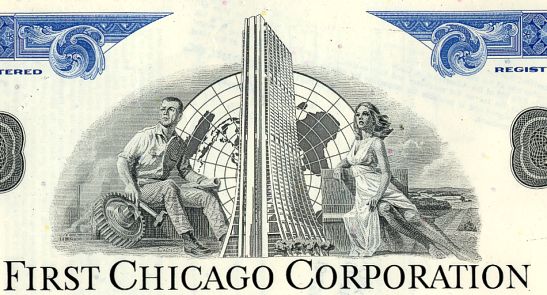
In other words, Crown had interests in a very large amount of First Chicago “problem loans” that became delinquent and, after they were delinquent, he was shockingly elected to the bank’s board. Adding to the oddity is the other person who was added to the First Chicago board at the same time as Crown – Dean Buntrock, the long-time head of Waste Management. Buntrock, shortly after he joined the board of First Chicago, was charged by the SEC for engaging in “massive financial fraud” beginning in 1992 and continuing through 1997.
As for Sullivan, after leaving First Chicago, the rest of his career seems to have been largely directed by his former boss, David Rockefeller. In 1991, it was Rockefeller who urged Sullivan to become New York’s deputy mayor for finance and economic development under David Dinkins. A few years later, Sullivan left to run the New York City Partnership and Chamber of Commerce, which itself had been founded by Rockefeller.
A few years after Sullivan’s departure and Crown’s arrival at the bank, First Chicago merged with the National Bank of Detroit, or NBD, in 1995. The motive, for First Chicago, was born out of its years-long struggle “to increase its profitability and shareholder value.” The National Bank of Detroit merged the elite interests tied to First Chicago with those of Detroit and the automotive industry, as NBD had long been associated with the Fisher family, who are deeply connected to General Motors. A few years later, in 1998, First Chicago NBD would merge yet again, this time with the McCoy-run Bank One.
The End of the McCoy Dynasty
After the merger with First Chicago NBD in 1998, John B. McCoy was “riding high” when he moved from Columbus, Ohio to Chicago to run the newly-enlarged bank. He and his wife, Jane, were introduced to the city’s power elite by Lynn Martin, a Chicago native who had served in the George H.W. Bush administration as Secretary of Labor.
Despite the initial introduction having gone smoothly, some First Chicago directors were uninterested in letting McCoy continue to run the show. According to Michael Bloch, a long-time friend of McCoy’s, some of the First Chicago directors felt superior to McCoy, stating “Here come John McCoy from Columbus, Ohio, to Chicago, and these guys are like ‘Here comes this hillbilly.’” Columbus Monthly later noted that it was two First Chicago directors in particular – James Crown and former Sara Lee CEO John Bryan – who were “looking to pounce on any sign of weakness” that McCoy might show to remove him from his post. Notably, Sara Lee Corporation has long been owned by Crown family interests, suggesting that Bryan was merely following James Crown’s lead.

Their opportunity came when First USA, a previously profitable credit-card issuer which Bank One had acquired in 1997, encountered financial problems. McCoy had let First USA’s co-founder, Richard Vague, continue to run the company from Dallas, Texas after the merger, at which point Vague raised interest rates and shortened grace periods to “juice profits.” After customers began to flee, First USA was due to post quarterly earnings $750 million below its projected earnings, shocking Bank One’s executives and directors, as well as Wall Street.
McCoy fired Vague, but James Crown and another banker with a significant stake in Bank One, Harrison Steans, leapt at the chance to dethrone the McCoy dynasty and put the bank under new leadership. McCoy later told Columbus Monthly: “The First Chicago people sort of ganged up and said ‘McCoy’s not the guy to run this company; we need to get rid of McCoy.” They succeeded and McCoy resigned in December 1999 with a “golden parachute” – a $10 million buyout and a $3 million annual pension for life.
After McCoy’s resignation, the former head of First Chicago NBD Corp., Verne Istock, took over as the bank’s acting chief executive until the board could elect a “permanent successor” to McCoy. At the same time, one of the bank’s directors, John Hall was appointed to be the bank’s new chairman. Hall did not work at the bank, but had been a director of Bank One since 1987, well prior to the merger with First Chicago NBD. Hall’s connection to Bank One is notable as he was a long-time executive at Ashland Oil.
Hall became executive assistant to the founder and chairman of Ashland Oil, Paul Blazer, in 1965. A year later, he became the company’s youngest ever vice president and continued to rise up the ranks of the company, eventually becoming vice chairman and Chief Operating Officer of the company in 1979. In 1981, he became chairman and Chief Executive Officer of the company.
While Hall held a top post at the company in the 1970s, Ashland Oil pled guilty to five counts of making illegal domestic campaign contributions, which became part of the Watergate scandal, and bribing government officials in several countries, including Libya and Nigeria. In this same period, Ashland Oil was also outed as a recipient of large amounts of CIA funds for “undisclosed purposes.” The CIA had secretly paid the firm nearly $99,000, $50,000 of which was paid in cash, and Ashland, the CIA, and the Securities and Exchange Commission all refused to comment on the nature of these payments.

While the purpose of these payments was never publicly disclosed, Ashland Oil was central to a number of controversies involving CIA veterans operating in Oman and Libya during this period who were accused of still having ties to the intelligence agency. As noted in One Nation Under Blackmail, many of these veterans were working on behalf of what has been called the “private CIA” created during the Carter administration by intelligence operatives Ted Shackley and Thomas Clines. Several of these CIA veterans were advising Omani leadership and this resulted in favorable deals for Ashland Oil in the region. Others who cultivated ties to Oman’s sultan during this time included Israeli intelligence-linked figures such as Bruce Rappaport and Marc Rich, as well as the intelligence-linked Bank of Credit and Commerce International (BCCI). John Hall’s predecessor as Ashland’s CEO, Orin Atkins, was forced to resign his post in 1981 due to his connections to these networks and resulting scandals, including the allegation that Atkins had personally paid millions of dollars in bribes to an Omani official.
Hall joined Bank One’s board in 1987, shortly after Bank One began acquiring banks in Kentucky, where Ashland Oil was based at the time. 1987 was also the year that Bank One’s role in money laundering on behalf of Iran-Contra arms sales ended, as the scandal began to come to light and under the scrutiny of Congress and the public. The genesis of Iran-Contra, and several of its top conspirators, were notably tied to the same “private CIA” network that had been so entangled with Ashland Oil.
The Search for a New CEO
After Jamie Dimon was forced out of Citigroup in 1998, he spent the rest of that year and the following year without full-time work and facing an uncertain future. While he “took up boxing” and spent a few weeks in Europe with his wife and children, he mulled over what would be his next move. He later stated:
I thought a lot about what I should be – an investor, a merchant banker, an executive? Did I want to work at a big or small company? Did I want to return to financial services or try something new? The more I thought about it, I loved the challenges of a big company, especially a company that needed a lot of improvement. But I didn’t want to just preside over a liquidation. I wanted a fixable problem.
After rejecting offers from Home Depot, Amazon and several financial services firms, Dimon “began to wonder whether the right opportunity would ever come along.” During this period, Dimon had also been courted by none other than John B. McCoy before he was forced out of Bank One. In 2014, McCoy stated that, before leaving the bank, he had had “several conversations” with Dimon about hiring him as his “No. 2” shortly after the First USA debacle. However, “with so much happening so fast as Bank One, [McCoy] never got around to making an offer.”
Shortly after McCoy was ousted, in January 2000, the Bank One board formed a search committee consisting of three directors from the legacy Bank One faction and the legacy First Chicago NBD faction. The three legacy Bank One directors chosen were John W. Kessler, Bennett Dorrance and John Hall. Kessler’s background and his close-knit ties to Leslie Wexner and Jeffrey Epstein were detailed in Part 1 of this article. Dorrance, on the other hand, is an heir to the Campbell’s Soup fortune with extensive real estate and aviation interests. John Hall, as previously mentioned, was a long-time executive and CEO of the CIA-linked Ashland Oil.

The other three members of the search committee that would eventually hire Dimon were three legacy directors of First Chicago NBD- James S. Crown, Siegfried Buschmann, and Richard Manoogian. Given that the Crown family and James S. Crown have already been extensively examined in this article, it is important to note the backgrounds of other two men, who hail from the NBD-side of the First Chicago NBD merger in 1995. Buschmann is a German citizen who previously worked for German steel giant Thyssen AG before heading its Michigan-based subsidiary, the Budd Company, which has extensive connections to the American automotive industry. Given NBD’s own historical connection to that industry, Buschmann’s presence here is not too surprising. Manoogian is, perhaps, more interesting, as he is connected to the Detroit-based network of Leslie Wexner’s mentors, Max Fisher and A. Alfred Taubman.
Richard Manoogian is chairman emeritus of Masco corporation, which was founded by his father, Alex Manoogian. Under Richard Manoogian, the company “drew criticism” from analysts and media for insider stock sales and similar scandals. In addition to Masco, Manoogian is a long-time director of the Ford Motor Company and serves on the Henry Ford Board of Trustees. Manoogian has also boasted close ties to two other Detroit-based business partners of the Fords – Max Fisher and A. Alfred Taubman. As noted in One Nation Under Blackmail, Fisher and Taubman were Leslie Wexner’s mentors who are credited with Wexner’s success in the retail industry, particularly Taubman – a shopping mall magnate who was instrumental in Wexner’s The Limited and other Wexner-owned brands becoming ubiquitous in American malls.
Manoogian became a director of Detroit Renaissance, a redevelopment organization for the city of Detroit, in 1987, replacing his father who had joined the group in 1974. It was originally co-chaired by Max Fisher, Henry Ford II and Robert Surdam – then president of National Bank of Detroit (NBD). A. Alfred Taubman was also a director of Detroit Renaissance as was the head of NBD at time it merged with First Chicago, Charles Fisher III. Manoogian first joined the board of NBD in 1978.

Manoogian and Taubman seem to have been particularly connected. For instance, both were the main donors to the Detroit Institute of Art (DIA). His activities in the arts are not without controversy – as Forbes once noted, unusual art sales between Manoogian and his company Masco had come under scrutiny in the past. In addition, Manoogian, Taubman and Fisher jointly lobbied for meetings with former Govenor of Michigan John Engler over state funding of arts institutions like DIA. Notably, Manoogian’s extensive art collection was procured and managed by Taubman’s daughter-in-law, Ellen Taubman. Ellen Taubman had previously worked at Sotheby’s the prestigious auction house that Taubman, Fisher and Ford had taken over along with Taubman’s protege, Leslie Wexner, in 1983. Taubman would later serve prison time for his role in orchestrating a price-fixing scheme while he ran Sotheby’s.
As noted in One Nation Under Blackmail, while Wexner was on the board of Sotheby’s and while Taubman still controlled it, Ghislaine Maxwell frequented the auction house in search of “pretty ‘gallerinas’ to meet Jeffrey Epstein.” A former friend of Maxwell’s said the following about Maxwell’s attendance of auctions and parties at Sotheby’s:
She [Maxwell] would go to every art gallery opening and was a familiar presence at auctions and parties at Christie’s and Sotheby’s […] The art world is full of pretty young girls and many of them are young and broke. You’d see her everywhere, often with beautiful blonde girls in tow.
Choosing Dimon
After the search committee involving the aforementioned directors was formed, they hired the search firm Russell Reynolds to manage the search process and narrow the pool of potential CEO candidates down to 25 finalists. The search committee then reviewed these finalists and interviewed 15 of them in detail. James Crown was particularly vocal from the get-go about how “Dimon stood out from the other candidates.” Crown later stated the following about his first impressions of Dimon:
Jamie met with the board and made a very convincing presentation about where he would focus his energy in the beginning. It was clear he had seen this movie before. He had the experience of cutting costs and bringing organizations together, something we clearly needed.
Soon, it was down to two finalists – Dimon and Bank One’s interim CEO Verne Istock. Dimon eventually won out and on March 27, 2000 – Ashland Oil CEO John Hall told reporters: “Jamie’s fresh perspective and his ability to galvanize employees also set him apart from an exceptional field of candidates from around the country.”

John W. Kessler has also been open about his role in helping select Dimon. He told Columbus CEO the following:
I had been on the Bank One (formerly Banc One) board for a long time. I was on the search committee that hired Jamie Dimon to be Bank One’s CEO after John (B.) McCoy retired. Then when JPMorgan acquired us, I was lucky to make the cut to go on JPMorgan’s board, which was really a lot of fun and interesting. Jamie is a great leader, he’s a great banker–there’s nobody better-and a nice person.
When asked “What did you see in Mr. Dimon when you helped select himfor the top position?,” Kessler answered “He’s just a fabulous leader. He’s the best banker in the country, there’s no question.”
After being selected by a mix of powerful businessmen, many of whom shared connections to intelligence and/or organized crime, Dimon himself bought a significant stake in Bank One. Of his decision, he later said “I was going to give it my all, and this was going to be my new family.”
Dimon’s new family would soon grow larger, with the acquisition of Bank One by JP Morgan in 2004. After the merger, Dimon – along with figures like John W. Kessler and James S. Crown – would go on to play a key role at the newly combined entity. As we will see, Crown in particular would become a source of controversy due to his role as head of the bank’s risk policy committee, which was blamed for ignoring “red flags” related to the 2008 financial crisis, the so-called London Whale fiasco and, as we now know, the antics of Jeffrey Epstein at the bank.
This investigative series is sponsored by the Solari Report.

